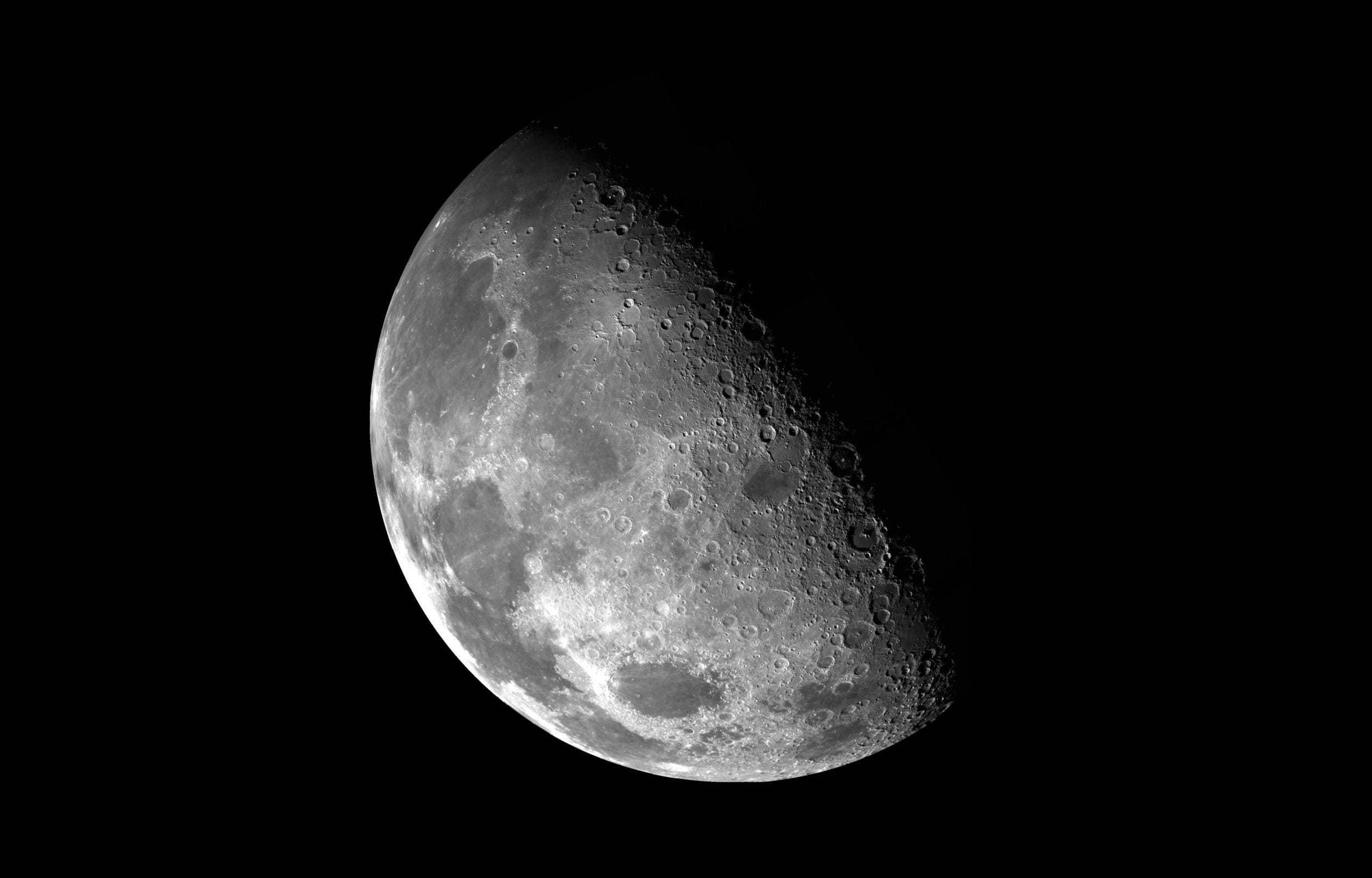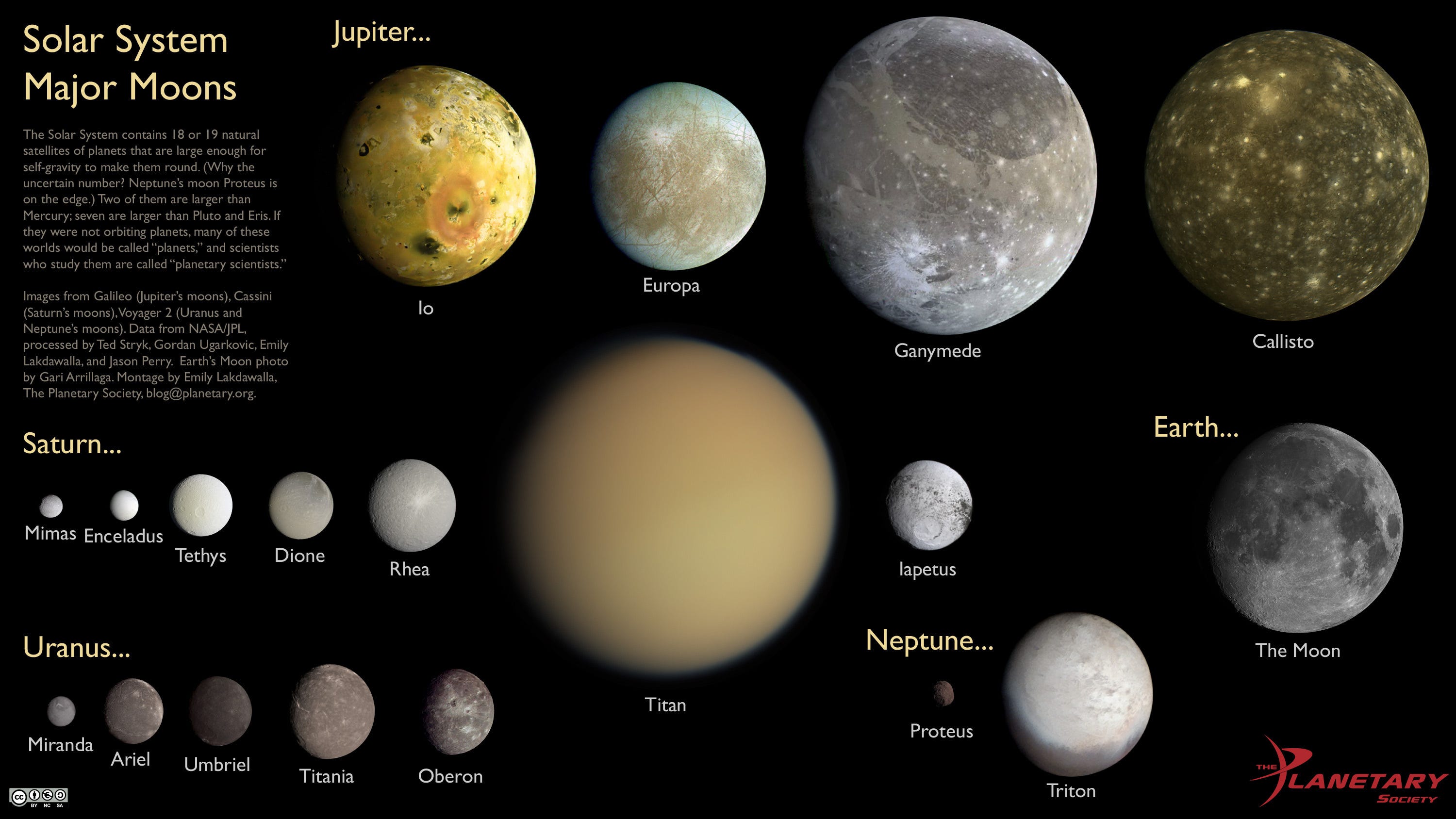Recipes to make moons
Our Solar System hosts a great diversity of moons. There’s our own Moon, whose airlessness makes it a natural geological time capsule of events in the early Solar System. There’s Saturn’s largest satellite Titan, which boasts an atmosphere and lakes of methane in eerie reminiscence to adolescent Earth. There’s Triton, which spews out nitrogen geysers from a likely subsurface water ocean all the way out at Neptune. How did these and many more distinctly fascinating moons form?
It turns out, there are more ways to make moons than planets.

How Earth and Mars got their moon(s)
Where did our Moon come from? Nobody knows for sure, but studies of the 382 kilograms of rock samples brought to Earth by Apollo astronauts broadly supports a fiery origin story. Scientists think a titanic collision took place 4.5 billion years ago when the planets had just formed. A young Mars-sized planet named Theia collided with the newborn Earth. The impact ejected a huge amount of material. While some of this material escaped into space, the rest stayed in orbit and consolidated to form our Moon. A similar ancient collision of a young planet with Pluto may have created its largest moon Charon.
Not all collisions lead to large moons though; case in point being Phobos and Deimos, the small and lumpy satellites of Mars. Their circular orbits, along with extensive simulations, suggest that a large asteroid or comet may have impacted Mars shortly after its birth, with the resulting orbital debris becoming rings and eventually clumping into the small moons. That, or only one larger moon formed but then broke apart under Mars’ gravity into Phobos and Deimos less than 2.7 billion years ago.

Why don’t Mercury and Venus have a moon?
As you can tell by now, colossal planetary collisions were common in the chaotic early Solar System. But they don’t guarantee a moon.
Scientists think Mercury also may have experienced a high-speed impact that stripped off its entire outer layer and sprung the material into space. But unlike Earth, Mercury is too close to the Sun and not as massive to have held that material in orbit against Sol’s pull, thereby being moonless. Intriguingly, this scenario would also explain why Mercury’s core takes up more of the planet’s volume than Venus, Earth, and Mars.
The moonless Venus is more puzzling. Being about twice as farther away from the Sun than Mercury and almost as massive as Earth, any ancient planetary collision likely would’ve produced a Venusian satellite. Scientists think Venus experienced not one but two giant impacts, with the first one creating a moon but the second toppling Venus in a way that led to the moon moving inward and ultimately colliding with the planet. Such a “double impact” scenario would also explain Venus’ extremely slow rotation rate of 243 Earth days, and the fact that it spins in the opposite direction of most planets.
How giant planets like Jupiter get their many moons
When giant planets like Jupiter form, their higher gravity can attract large amounts of material which orbit the planets as dense circumplanetary disks. Much like how disks around new stars forge planets, material in these circumplanetary disks coalesce over time to form moons, the most pristine examples of which are the large Galilean moons of Jupiter: Io, Europa, Ganymede and Callisto.
Saturn’s moon Titan, which is bigger than planet Mercury, formed from a circumplanetary disk too. Uranus also has five sizable moons formed from a disk but their order remains mysterious because the outer satellites are counterintuitively far more massive than the inner ones. We have even detected a circumplanetary disk around the young Jupiter-like planet PDS 70c outside our Solar System, from which large moons could form.
The higher gravities of the giant planets sometimes makes them simply steal a moon. At some point in the Solar System’s past, Triton happened to pass close enough to Neptune to get captured in orbit around the ice giant. Saturn’s moon Phoebe is thought to be captured too because its orbit is highly elliptical and inclined with respect to Saturn’s rotation plane.

Future exploration
To figure out how our Moon formed, which is intricately tied to Earth’s origin, we need to go back to the Moon with missions like those under Artemis to bring pristine samples from deep under the lunar surface and from inside permanently shadowed regions. Likewise, Japan’s Martian Moons eXploration mission, or MMX, launching in 2024 will survey the martian moons and bring a sample of Phobos back to Earth in 2029 to help us ascertain if they really formed from ancient rings.
In the second half of this decade, a slew of missions from across the globe will launch to study Venus in unprecedented detail, including the VERITAS, EnVision and Shukrayaan orbiters and the DAVINCI atmospheric probe. Their high-sensitivity measurements of Venusian rocks will help scientists constrain Venus’ past significantly and thereby determine how likely it was to have a moon in its sky.
The 2023-2032 Planetary Science Decadal Survey—a report produced every 10 years by the U.S. scientific community to guide future NASA missions—recommends sending a spacecraft to Uranus as the highest priority. One of the four major scientific objectives of this Uranus Orbiter and Probe (UOP) mission is to understand the mysterious origin of the planet’s five large moons.
In the meantime, the recently launched JWST space telescope will directly study moon-forming disks around planets outside our solar system, giving us a direct look at an impressive recipe for making large moons.
What a profound scientific success it would be to identify the origin of our Moon and of those across our Solar System.
Originally published at The Planetary Society.
→ Browse the Blog | About | Donate ♡
